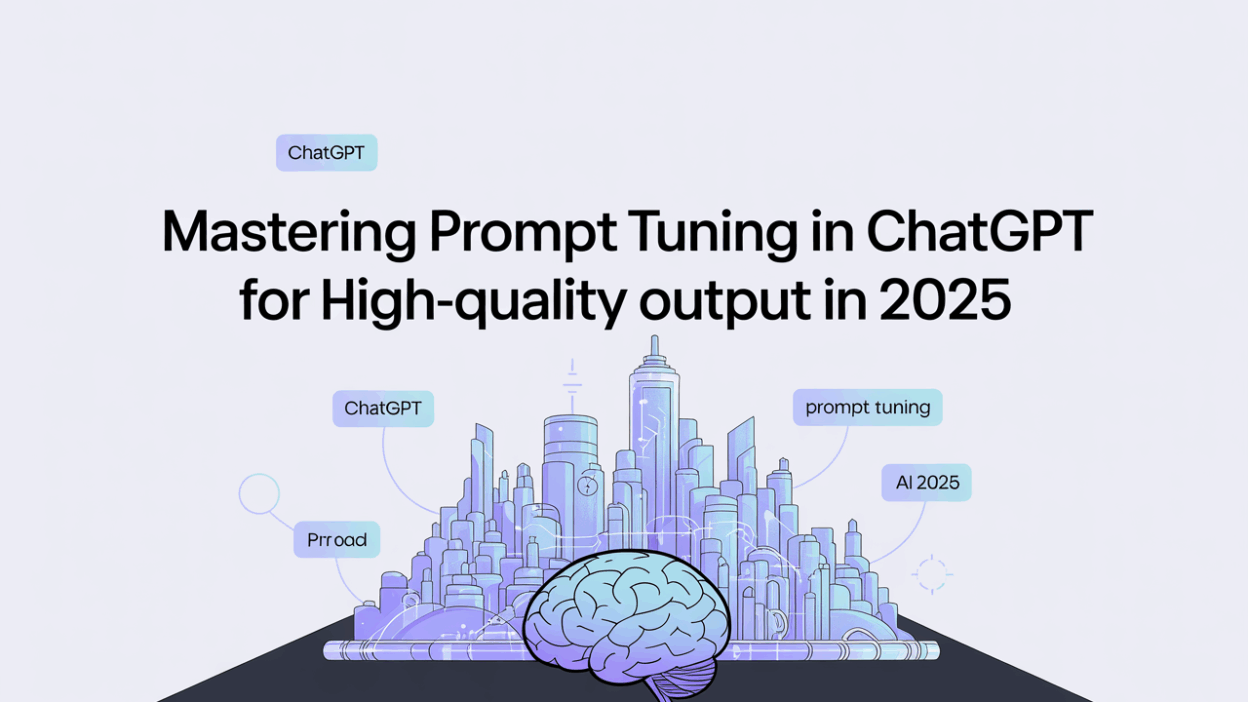Mastering prompt tuning in ChatGPT has become an essential skill for anyone looking to harness the full potential of AI-generated content in 2025. Whether you’re a content creator, marketer, developer, or business strategist, understanding how to craft effective prompts can dramatically improve the quality and relevance of the outputs you receive.
What Is Prompt Tuning?
Prompt tuning refers to the process of refining and optimizing input queries—also known as prompts—to guide AI models like ChatGPT toward producing more accurate, coherent, and contextually relevant responses. This practice combines both creativity and technical insight, often referred to as "prompt engineering," and it plays a critical role in shaping AI interactions .
Unlike traditional programming, where logic is explicitly coded, AI systems rely on natural language instructions. Therefore, the way you phrase your prompt can significantly influence the model’s output. The goal of prompt tuning is to find the optimal phrasing that elicits the most useful response from the AI .
Why Prompt Tuning Matters
In today’s fast-paced digital landscape, high-quality content needs to be generated quickly and efficiently. With businesses relying more than ever on AI tools for customer service, marketing copy, product descriptions, and even code generation, mastering prompt tuning ensures that outputs align with brand voice, user intent, and functional requirements .
Moreover, poorly constructed prompts can lead to ambiguous or irrelevant results, wasting time and resources. Effective prompt tuning minimizes revision cycles and enhances productivity by ensuring that the AI understands exactly what is being asked .
Techniques for Mastering Prompt Tuning
Here are some proven techniques for improving your prompt engineering skills:
1. Use Role Prompting
Assigning a specific role or persona to the AI helps guide its tone and style. For example, “You are a professional SEO copywriter” or “You are a cybersecurity expert.” This method increases clarity and makes outputs more targeted .
2. Be Specific and Clear
Avoid vague or open-ended questions. Instead, provide detailed instructions such as: “Write a 500-word blog post about climate change, focusing on renewable energy solutions for urban areas.” Specificity leads to better results .
3. Apply Few-Shot Learning
Including examples within your prompt (few-shot prompting) can help the AI understand the expected format and structure. For instance, if you want bullet points, include one or two sample bullets to guide the model .
4. Iterative Refinement
Treat prompt creation as an iterative process. If the initial output isn’t perfect, refine the prompt based on the result. Ask follow-up questions like, “Rewrite this using simpler language” or “Make this more persuasive.” This builds on the AI’s self-correction capability .
5. Combine Prompting with Fine-Tuning
For advanced users, combining prompt engineering with model fine-tuning can yield even better outcomes. While prompting guides behavior through input instructions, fine-tuning adapts the underlying model to specific tasks or styles .
Best Practices for 2025
As AI continues to evolve, so do best practices for interacting with it. In 2025, professionals are advised to:
- Test multiple variations of prompts to see which performs best.
- Maintain a prompt library for reuse and refinement over time.
- Leverage templates for common use cases like email drafting, social media posts, or FAQs.
- Stay updated on new features and capabilities introduced by OpenAI and other platforms .
Conclusion
Prompt tuning is no longer a niche skill—it’s a necessity for anyone working with AI technologies like ChatGPT. By applying strategic prompting techniques, users can unlock higher-quality outputs, streamline workflows, and enhance communication with AI systems. As we move further into 2025, mastering this art will separate those who merely use AI from those who truly harness its power .


